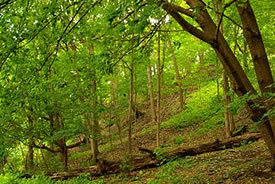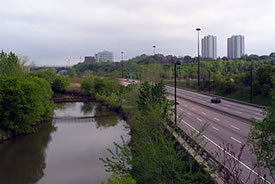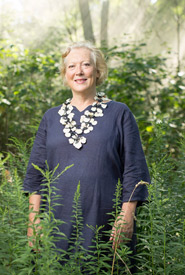Forests are too big to fail: The value of our urban forests

Forest by the Humber River, ON (Photo by Michael Gil, Wikimedia Commons)
With 16,000 trees per square kilometre — or four trees per person — the City of Toronto is indeed a city in a forest, and that’s never more evident than when you stand at the top of the CN Tower in summer.
But there’s a lot more to urban forests than scenery. They represent important ecosystems that improve environmental quality and contribute to human health and well-being. With the population of the Greater Toronto Area — now about 6.3 million — expected to reach more than nine million by 2041, urban forests are no longer a “nice to have;” they are rapidly becoming a “must have.” They are a necessity in terms of the well-being of both the environment and human health and as an important ingredient in maintaining Toronto as a competitive city that continues to attract businesses and talent.
So our trees have huge value. But how do we actually measure that value in dollars and cents? Our TD Economics team used the City of Toronto as a case study on the value of urban trees. The results of their study may surprise you.
The more than 10 million trees in the City of Toronto have a replacement value of about $7 billion — or an average value of $700 per tree. And the bigger the tree, the greater its value.
On top of this, urban trees provide many environmental benefits. These benefits include storm water control, air pollution abatement and summer cooling. Toronto’s urban forest removes about 19,000 tonnes of air pollution from the atmosphere each year. That’s equivalent to the amount released by over one million automobiles or 100,000 single family homes.

Riverdale Park, Don Valley, ON (Photo by Skeezix1000, Wikimedia Commons)
Large trees are particularly valuable, absorbing up to 36 times more air pollutants and storing up to 291 times more carbon than smaller trees. Trees contribute to summer cooling through the shade they provide. The annual net cooling effect of a young healthy tree is equivalent to 10 room-sized air conditioners operating 20 hours a day.
These environmental benefits total more than $80 million of cost savings each and every year. This represents about $41 of savings per year per household. Energy savings to the city are about $6.5 million per year. And while it can’t be easily quantified, the presence of trees and proximity to green spaces has been shown to increase property values and rental incomes, which means additional tax revenue.
Sure, urban forests and trees require maintenance, and that costs money. But for every dollar spent on annual maintenance, Toronto’s urban forest returns up to $3.20 worth of benefit to the community.
I heard that this past winter 20 percent of Toronto’s urban forest canopy was destroyed by the ice storm, and it will take many years for the scars and damage to heal. But I think you’ll agree, based on the facts presented, that the effort will be more than worth it. All of us have a part to play in increasing the natural capital of our urban forests. Our municipal governments and conservation authorities can enhance and maintain our green spaces.
Did you know that the City of Toronto is one of the few cities in North America to have an urban forest strategy? It includes a goal to increase the city’s tree canopy by 40 percent. And did you know that there are more than 20 different community organizations in Toronto alone dedicated to our urban green space?
The corporate sector can also play a role. Last year, for example, our TD Green Streets program provided support to 34 municipalities for street trees and our employees helped plant nearly 50,000 trees. Through our partnerships we provided $7.4 million in direct support to community environmental initiatives in 2013, enhancing biodiversity and providing education and awareness programs. Visit 2013 Corporate Responsibility Report to learn more.
So what can you do? Visit our parks and green spaces, volunteer with a community group, and plant trees in your garden. You might feel a bit differently next time you go to the garden centre, realizing that that sapling you buy could turn into a valuable environmental, social and financial investment for your future and that of your city.


